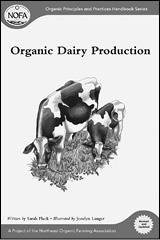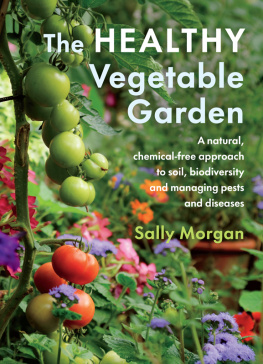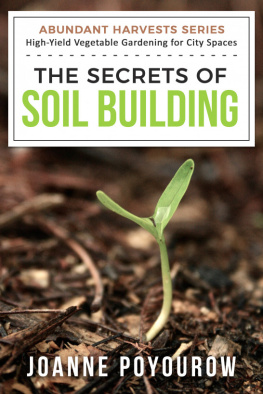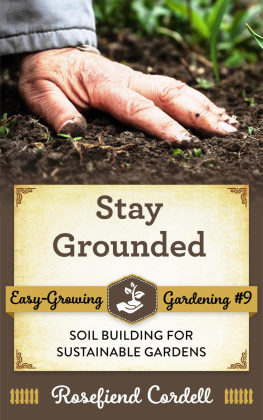Teaming with Microbes
Teaming with Microbes
The Organic Gardeners Guide to the Soil Food Web
REVISED EDITION

Jeff Lowenfels & Wayne Lewis
Foreword by Elaine Ingham

Copyright 2010 by Jeff Lowenfels and Wayne Lewis. All rights reserved.
Disclaimer: The use of the scientific term soil food web is not intended to promote any commercial activity or to suggest any affiliation with a commercial entity.
Published in 2010 by Timber Press, Inc.
The Haseltine Building
133 S.W. Second Avenue, Suite 450
Portland, Oregon 97204-3527
www.timberpress.com
2 The Quadrant
135 Salusbury Road
London NW6 6RJ
www.timberpress.co.uk
ISBN-13: 978-1-60469-113-9
Printed in China
The Library of Congress has cataloged the hardcover editions as follows:
Library of Congress Cataloging-in-Publication Data
Lowenfels, Jeff.
Teaming with microbes : a gardeners guide to the soil food web / by Jeff Lowenfels and Wayne Lewis.
p. cm.
Includes bibliographical references (p.) and index.
ISBN-13: 978-0-88192-777-1
1. Soils. 2. Soil ecology. 3. Soil microbiology. 4. Food chains (Ecology)
I. Lewis, Wayne, 1942. II. Title.
S591.L59 2006
631.4dc22 2005033502
A catalog record for this book is also available from the British Library.
We dedicate this book to
our wives, Judith Hoersting and Carol Lewis,
who allowed us to team with microbes in the first place.
They married gardeners and ended up with
amateur microbiologists. They let compost tea brew
in the kitchen. They put up with fungi, bacteria,
nematodes, spiders, and worms. They remained silent
when we took the molasses from the cupboard.
They learned to turn compost piles and to
appreciate mushrooms in our lawns.
Foreword
If you go down in the dirt today, youd better not go alone! For todays the day the nematodes have their picnic!
Sung to the tune of The Teddy Bears Picnic
W HEN YOU ARE BORED looking at soil from urban lawns, making up words to popular songs is always good! Soil shouldnt be so boring, but urban landscapes mean dead dirt. It means being bent over a microscope for long hours looking at nothing but inert particles. Boring. And so, we make up words to songs.
Real soil is active, alive, moving! Critters everywhere, doing interesting things! No need to invent new lyrics to old songs. No hours staring through a microscope looking at micrometer after micrometer of boringnothing happening. Instead, after just a few secondsmovement, life, action!
Urban dwellers and other growers have been pouring toxic chemicals on their soils for years, without recognizing that those chemicals harm the very things that make soil healthy. Use of toxics to any extent creates a habitat for the mafia of the soil, an urban war zone, by killing off the normal flora and fauna that compete with the bad guys and keep them under control. Recent work strongly indicates that toxic chemicals destroy water quality, soil health, and the nutritional content of your food, because of the loss, eventually, of the beneficials in the soil. If toxic material was applied only once in your life, the bad situation we have today would not have developed, but typically with that first application, thousands of organisms that were beneficial to your plants were killed. A few bad guys were killed as well, but good guys are gone, and they dont come back as fast as the bad guys. Think about your neighborhood: who would come back faster if your neighborhood was turned into a chemical war zone? Opportunistic marauders and looters, thats who comes back in after disturbances. In the human world, we send in the National Guard, to hold the line against criminals. But in soil, the levels of inorganic fertilizer being used, or the constant applications of toxic pesticide sprayed, mean the National Guard of the soil has been killed, too. We have to purposefully restore the beneficial biology that has been lost.
Where will the new recruits come from? You have to add thembacteria, fungi, protozoa, nematodes, earthworms, microarthropodsback to your soil. Roots of plants feed these beneficials, but to make sure that the beneficials get reestablished, care packages may need to be delivered. Soil Foodweb, Inc., helps people rapidly reestablish the biology that creates the foothold for health to come back into these systems; and this book describes these hardworking members of the front line of defense for your plants. Where do they live? Who are their families? How do you send in lunch packs, not toxics, to help the recruits along?
Win back your soils health. Put nothing on your soil if you dont know what it will do to the life under your feet. If there is no information about how something impacts the life in your soil, or if the material has never been tested to determine what it does to the organisms in your soil, dont use the material. If you have already purchased the product, test it yourself.
Toxics are sometimes necessary to roust out a particularly bad infestation or disease, but toxics should be used as a last resort, not as your first response to a wilting plant. If you use toxics, then remember to replace the good guys, and send in some food, immediately.
Reestablishing the proper biology is critical. You may lose a few battles along the way. But persevere, and you can win. Think strategically: how can you help deliver troops, foods, medicines, and bandages to the front lines of the battle between beneficials and the diseases and pests in the most effective way? The directions, at least to the best of our knowledge, are in this book.
Most people have a great deal to learn when it comes to soil. You need the information that Jeff and Wayne have put together. They also make their lessons about soil health enjoyable! They present what could be deadly dull and boring in a way that is exciting and understandable. Instead of your having to work for years and years, staring through microscopes, as my colleagues and I have done in our efforts to understand soil biology, this book gives you an overview of what has been learned! The work of many scientists is brought together in this book, in a way that allows the complex story of life in the soil to be easily understood.
I hope you will join with us and help to learn how to return health to soil, and therefore, to the food you eat. The instructions are here.
Dr. Elaine Ingham, Ph.D.
President, Worldwide, Soil Foodweb, Inc.
www.soilfoodweb.com
Preface
W E WERE TYPICAL suburban gardeners. Each year, at the beginning of the growing season, we carpet bombed our lawns with a mega-dose of water-soluble, high-nitrogen fertilizer and watered like crazy; then we strafed their weeds with a popular broadleaf herbicide. Next, we attacked our vegetable gardens and flower beds with a bag or two of commercial fertilizer and leveled them with a rototiller until the soil, the color and texture of finely ground coffee, lay as smooth and level as the Bonneville Salt Flats. These things we did religiously, as did most of our neighbors. Once was never enough either. We continued to use chemical fertilizers throughout the season as if we were competing in the large-vegetable contest at the Alaska State Fairand at the end of the season we rototilled again, for some inexplicable reason.
Next page










